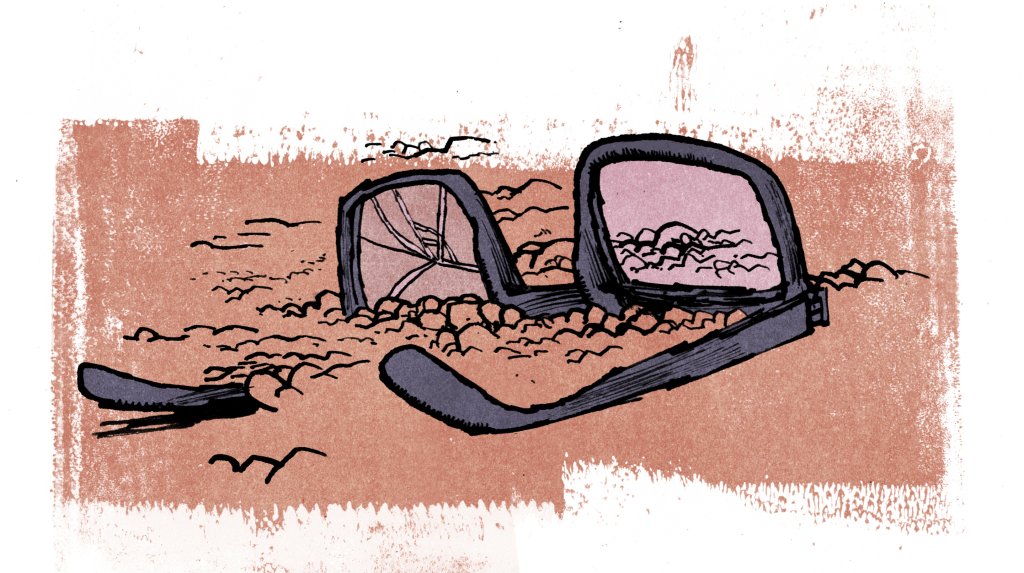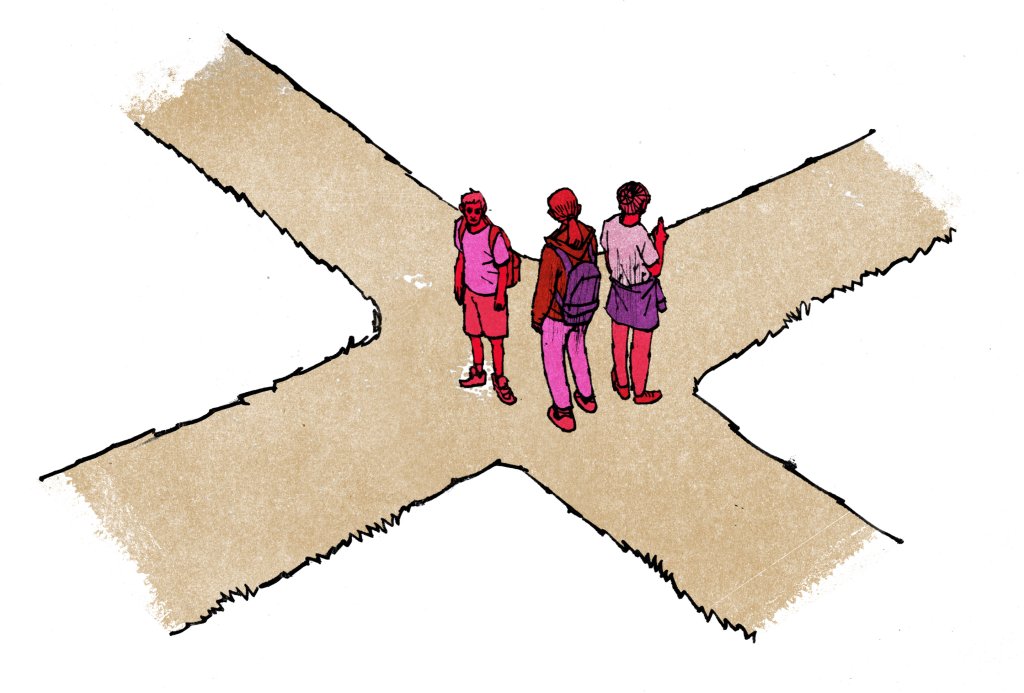Tackling the Question of Character Development in the Classroom
Using texts, projects, and classroom policies, some English teachers encourage self-reflection and teach social responsibility.
Your content has been saved!
Go to My Saved Content.When I think about the idea of a moral education, I think of my fourth-grade teacher, Ms. C.
On a field trip, a classmate, Daniel, asked me to hold his glasses. He wanted to swim in a creek and I preferred relaxing on a bench, burden-free. Daniel lost his glasses in the creek, and back at school, Ms. C lectured me in a calm but steely tone: It would have been a small sacrifice to hold the glasses. Now, Daniel’s low-income family would struggle to replace them.
Her larger moral lesson? A community requires members to accept minor inconveniences to help meet everyone’s needs.
Over my own teaching career, I’ve observed colleagues wishing that more students received such lessons. Last year, frustrated by plagiarism, tardies, and loutishness, a fellow teacher recalled that his alma mater had employed a so-called Dean of Men to improve students’ moral fiber.
I imagined Bart Simpson etching mantras on a chalkboard (“I will not encourage others to fly”) before skating off to ply more mischief. In times past, young Barts had to make meaningful amends in school—litterbugs mopped hallways, taggers stayed after school to scrub or repaint surfaces they’d defaced.
I can laugh at my colleague’s characterization but understand the overarching point: With the adult world waiting for their arrival, teens should know how to behave.
Schools and teachers can facilitate this process, notes Lori Soifer, director of the National Schools of Character program for Character.org, a nonprofit dedicated to promoting character education. From her perspective, “All educators are character educators, whether they want to be or not.”
Even though morality is inherently murky and subjective, that’s no reason not to try, says Andrew Peterson, a professor at the University of Birmingham in England and deputy director of its Jubilee Centre for Character and Virtues. “Young people are exposed to matters of honesty, compassion, and justice in their lives anyway,” Peterson argues. “By enforcing norms around various values or virtues, every teacher is already involved in character education.”
Indeed, Ms. C telling Daniel to be more self-sufficient would have been a moral lesson too; she surely did say that in private. She could have levied an unconstructive consequence, like Bart with the chalkboard (“I will not wear my glasses in the creek”). She could also have simply shrugged and done more lessons about how to write a strong book report—another moral lesson.
Teachers are, rightfully, consumed with designing engaging lessons, raising test scores, and boosting attendance. At the same time, through curriculum choices and community-building, the educators I spoke with for this article embrace character education along with the rest of their work, seeking to both respect and transcend cultural, political, and religious differences to produce good people—as well as capable students. I spent a month interviewing high school English teachers and other experts to learn how teachers can and should address the challenge of imparting—or facilitating—a moral education without being judgmental or even oppressive.

Literature as Periscope
In Glenn Morgan’s classroom at La Jolla High School in San Diego, California, students studying Hamlet debate who (and what) may be responsible for the tragedy’s seven deaths.
Obviously Hamlet, students conclude—he who recklessly stabbed his ex-girlfriend’s father. But what about Claudius, the murderer who set everything in motion? And was it moral of Hamlet to seek revenge? His intel was spectral—a source as unreliable as an AI engine. In discussion, Morgan asks students to avoid assigning reductive labels like “psychopath” or even “evil,” and instead grow comfortable with multiple interpretations of events—a prerequisite for empathy and social responsibility in real-life situations.
“Without equivocation, English teachers are moral educators, helping students read literature that provides a periscope to a large world,” he says. Texts like Hamlet, while not necessarily moralistic in that they provide scripts for behavior, can be artifacts in what Paulo Freire called “thematic investigations”—explorations of issues relevant to students’ experiences.
Sometimes, classroom literary discussions lead to controversial topics, and Morgan says he wants students to decide which moral conversations feel essential.
When they read Hemingway’s “Hills Like White Elephants,” he waits for a student to mention abortion—the (yes) elephant in the room of that story. “I don’t lecture or say, ‘Hey, we’re going to talk about this,’ but it’s a moral issue that students want to discuss,” he says.
It’s challenging for even thoughtful students to leap from literature to actual life choices, Morgan notes. “I don’t think we as a culture really teach kids to be self-reflective.” Literature is a helpful way to bridge the divide, according to Morgan, who particularly worries that boys emotionally stunt themselves by abandoning humanities too early. “Boys reading fiction to build empathy really is something we need to push harder,” he says. “We have a generation of boys in… a tsunami of propaganda, misinformation, and social isolation.”
That media diet presents simplistic archetypes and binaries, according to Morgan: Violence is bravery, good battles evil, one is either manly or effeminate. But when students encounter complex characters, they can practice more nuanced thinking that will make them healthier participants in relationships, communities, and workplaces.
Courting Curiosity, Compassion, and (Occasionally) Controversy
Perry Dixon’s honors sophomores read Peter Singer’s Famine, Affluence, and Morality, which argues that the privileged have a moral obligation to help others, even at a manageable loss of wealth and comfort—a variation on what Ms. C told me in 1989. Dixon, who graduated from the same K–12 public school I attended (though he did not have Ms. C. in fourth grade), is a former youth pastor.
During research projects, Dixon’s students veer toward topics like police violence, health care, and housing, where discussions of morality feel necessary, with students examining questions such as whether health care is a right or a privilege.
While students approve of some terms—fairness, forgiveness, and kindness—other words immediately trigger tension. They might agree that justice is important but disagree about what it looks like: Justice is an end to police brutality for some, and for others it is necessarily harsh punishment for crimes.
This razor’s edge of disagreement, says Andrew Peterson of the Jubilee Centre, is fertile ground for classroom discussion. “It doesn’t mean that everyone agrees, but that there’s a framework or foundation, embedded with a shared vocabulary, though not necessarily shared meaning,” he says. “This is moral education, not moral indoctrination or moralizing.”
“I teach in the South, and if a teacher makes students feel uncomfortable, they can get in trouble,” says Dixon. One capable student, a devout Christian, wanted to research the death penalty for her project. To make an argument for it as a reasonable component of American justice, she had to learn how Christians both supported and opposed it, being informed by her beliefs but studying unfamiliar, secular stances. “If I were irresponsible, I could push her one way or another,” Dixon says, acknowledging also that some teachers so fear attracting controversy that they avoid these issues altogether.
Like Morgan, Dixon doesn’t tell students what to think. “I’m trying to be the steward of argument,” he says. Andrew Peterson suggests that educators can “offer a sense of safety” for exploring disagreement. For Dixon, that means avoiding classroom debate, and thus reducing the potential for ugly scenes. “There’s a lot of diversity in the room,” Dixon says. “I couldn’t have them present their research to one another, because there’d be serious conflict.”
He wants students to be curious, compassionate, and open-minded—important for academics and other professions, as well as moral growth. At the same time, he wants to avoid major turbulence. It is, he emphasizes, “a very thin line.”
Modeling Care in the Classroom
In Mike Tinoco’s classroom, students have some autonomy over breaks and phone use.
Like most educators, Tinoco, an author and teacher at Yerba Buena High School in San Jose, California, recognizes phones as pipelines to disinformation and desensitizing depictions of human suffering, but he worries that strict anti-phone rules will cause students to lose connection with their own needs, rather than turn their attention to the needs of their community.
“We can create humanizing systems” within schools, Tinoco says. “Kids have internalized that they must be compliant [instead of responsible],” and that’s exactly the sort of conditioning to which thoughtful teachers should avoid contributing.
A student who routinely takes 25-minute bathroom breaks (perhaps with phone in hand), for example, deprives the class of insights and loses instructional time. A student awaiting a doctor’s important message, on the other hand, might feel genuine anguish without a few minutes of phone access. Is it right for a teacher to hold both students to the same standard in the name of rules and consistency? In this instance, teachers can model the care that they hope students will show for others—to be actually invested in one another’s dignity, not just “nice.”
If he were teaching in a more conservative community, Tinoco—whose 2024 book, Heart at the Center, deals with standing up for justice and cultivating a nurturing classroom climate—says he’d follow the guiding principle that “all humans share the same sets of needs. All behaviors are efforts to meet needs. We view the other side as being in vehement opposition to ourselves, but I have to have the humility to trust that I too have ignorances.”
In his classroom, the work of trying to understand others is “messy.” Tinoco has students who are sympathetic to national leaders whose policies directly threaten peers. Some are enraptured with the podcasters that Glenn Morgan sees as dangerous role models. It’s a challenge to understand the needs that these teens want met while validating and protecting their vulnerable peers.

Meanwhile, back in Ms. C’s class, Michael, another classmate of mine and the fourth-grade wild card, was rambunctious, chaotic, and frequently violent. Instead of isolating him, Ms. C did something radical—she brought in his mother, who candidly explained to 20 kids seated on the carpet that the family had been buffeted by addiction, poverty, and abandonment, and that Michael had borne the brunt of it.
While perhaps too much information or even irrelevant to some, this disrupted the narrative in my young brain.
I still didn’t want to hang out with Michael. But I also couldn’t forget that he was a human being, and that he deserved care and dignity like anyone else. I felt good after I had that realization.
Being a stand-up person isn’t always clear or easy. Becoming self-reflective is maybe the first priority, one that requires teens (and younger students) to view themselves as moral works in progress.
“We’re all in a learning process,” says Andrew Peterson.
In fourth grade, I also watched Roots, learned about Impressionism, and became a book report ace, but what I remember most about that year is a sharpening of my moral compass, a growing awareness about what moved the world and how I could move within it.
